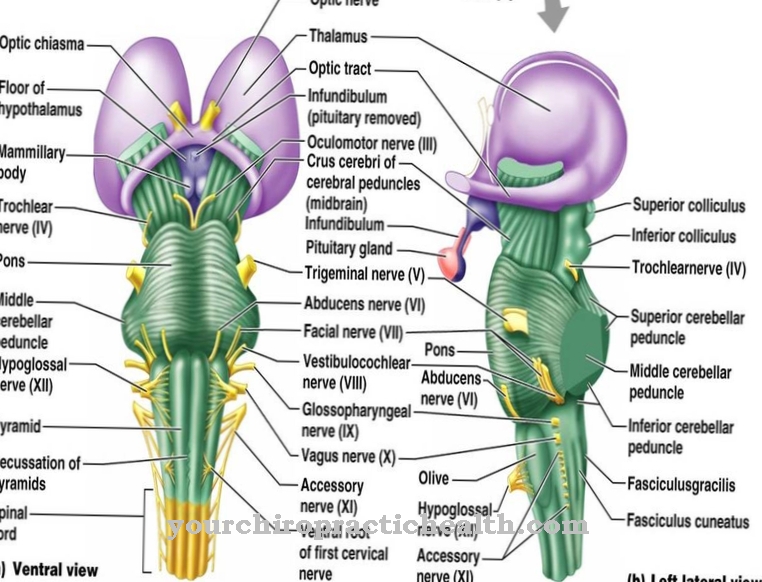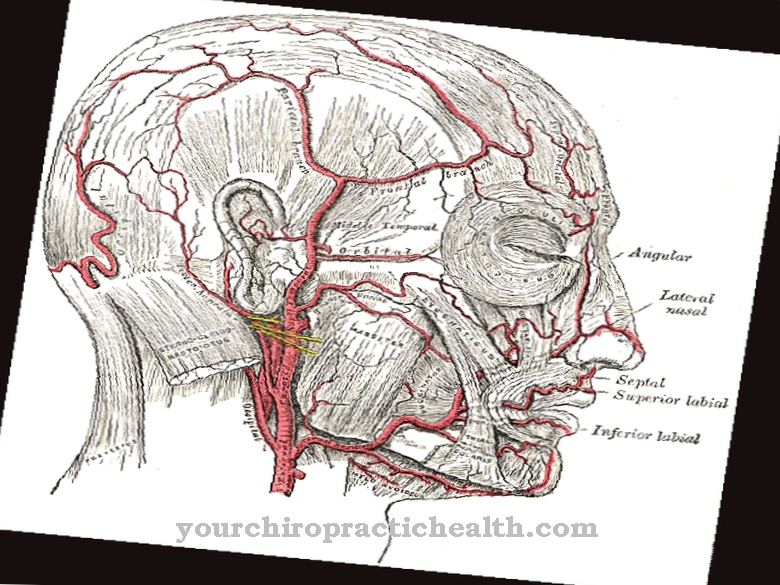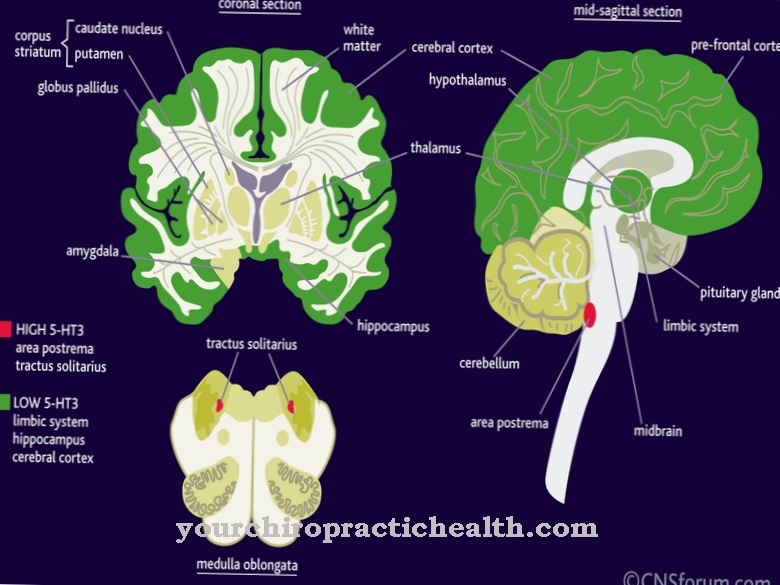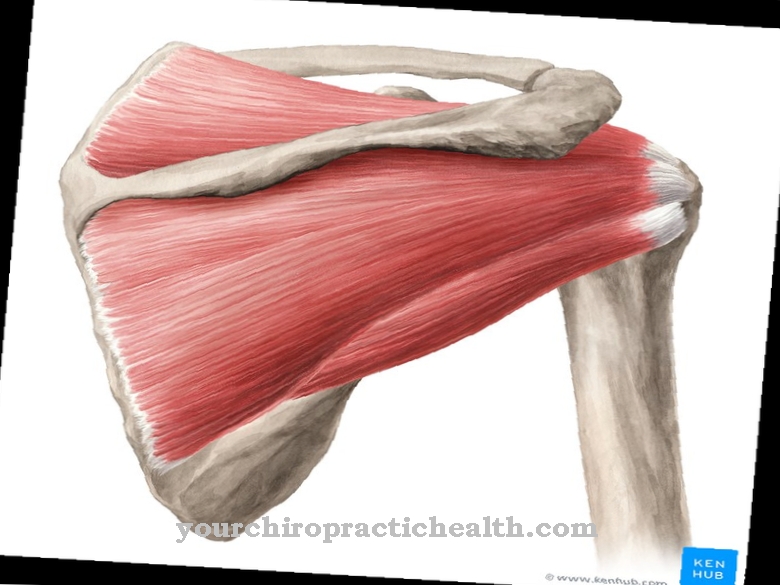At the Superior oblique muscle it is a muscle of the outer eye muscles, which is one of the skeletal muscles and is motorized by the fourth cranial nerve. The muscle is crucial for the downward view of the eyes and is in harmony with the other muscles of the outer eye muscles. A paralysis of the muscle leads to squint symptoms with double vision.
What is the superior oblique muscle?
From an evolutionary point of view, humans are referred to as eye-controlled living beings. Accordingly, evolutionary biologists argue that people in the past relied primarily on their visual perception in order to get an idea of their surroundings and to react to them.
With this, eye movements have played their part in the survivability of the human species. Eye movements are a complex interplay of contractions of different muscles. The eye muscles are made up of several skeletal muscles. One of these is the superior oblique muscle, also known as the upper oblique muscle is known. In animals, this muscle is sometimes referred to as the obliquus dorsalis or the patheticus muscle.
The muscle is a skeletal muscle of the external eye muscles, which also includes the rectus superior, rectus lateralis, rectus inferior, rectus medialis and obliquus inferior muscles. All human eye movements are caused by the external eye muscles.
Anatomy & structure
The superior oblique muscle arises from the sphenoid bone, the periorbita and the dural sheath on the optic nerve. The motor muscle pulls over the medial rectus muscle in the rostral direction. At the edge of the orbit, the tendon of the muscle pierces the connective tissue of the trochlea, which, in the form of the hypomochlion, serves to redirect the muscle pull.
In its further course in the dorsal direction, the superior oblique muscle has an attachment to the temporal upper quadrant of the eyeball, where it sits dorsal to the equatorial line over the sclera. The motor innervation of the muscle is given by the trochlear nerve, i.e. the fourth cranial nerve. Like all other motor nerves, this nerve not only carries motor fibers, but is also equipped with sensitive parts.
Position and tone information from the muscle spindles and the Golgi tendon apparatus of the muscle is permanently sent to the central nervous system via the afferent sensitive parts. As a skeletal muscle, the superior oblique muscle consists of the actual muscle fibers that cause the contraction and some auxiliary tissues, such as a tough connective tissue outer layer in the form of the fascia.
Function & tasks
The primary function of the superior oblique muscle is to lower or depress the eye, which is accompanied by an inward roll of the eye and a slight abduction. Rolling inward is also known as incycle production. In terms of adduction, the muscle is a pure sinker. The inward rolling of the eye increases with increasing gaze outward.
Together with the other muscles of the external eye muscles, the superior oblique muscle is responsible for all movements of the eye. Humans have four straight and two oblique eye muscles that interact in a complex manner. The outer muscles of the eye perform all rotary movements of the eye in all directions through coordinated contraction. In addition, all the external eye muscles work together to ensure that the eye positions are in a stable relationship to one another.
Only the superior oblique muscle is contracted by the trochlear nerve. The other eye muscles of the outer eye muscles receive their commands from the central nervous system via the nervus oculomotorius and the nervus abducens, i.e. the third and sixth cranial nerves. In the resting position, i.e. without active nerve-initiated muscle contraction, the basic tone of the outer eye muscles ensures that the eye does not twist.
You can find your medication here
➔ Medicines for eye infectionsDiseases
A failure of the trochlear nerve causes the superior oblique muscle to fail and thus affects the position of the eyes in the resting position. If all other muscles of the outer eye muscles are still functional, the affected eye is turned medially upwards by the tone of the still functional eye muscles after the failure of the superior oblique muscle.
The paralysis of the motor innervating trochlear nerve is also known as trochlear palsy and is clinically associated with strabismus and corresponding double vision in the sense of diplopia. The upward deviation of the affected eye is also known as hypertropia. The inward turning of the gaze at the same time is called esotropia. The outward curling around the sagittal axis caused by paralysis corresponds in turn to an excyclotropy. In the case of paralysis of the superior oblique muscle, double vision occurs primarily on the vertical, which is triggered in particular by looking downwards to the healthy opposite side.
Often, patients with such eye muscle paralysis tilt their head to the healthy side in order to compensate for the double vision and impaired function. This symptom is also known as an ocular torticollis. Paralysis of the motor supplying nerve and the resulting paralysis of the superior oblique muscle are caused by traumatic, inadequate care, tumor-caused, compression-related or bacterial or autoimmune inflammatory damage to the nerve tissue.
In the case of an isolated one-sided damage to the supplying nerve, paralysis occurs due to its anatomical peculiarities on exactly the opposite side of the side actually affected. In addition to paralysis, in therapeutic interventions on the superior oblique muscle, the proximity of its broad attachment point to the external vortex vein must be taken into account. Due to the close proximity of the muscle to this vein, vascular injuries can easily occur during surgical interventions within this area.













.jpg)

.jpg)
.jpg)











.jpg)